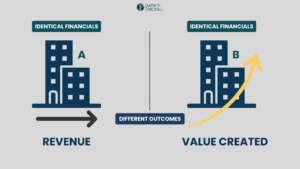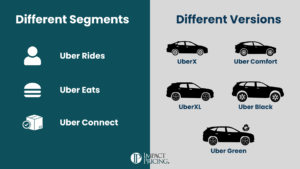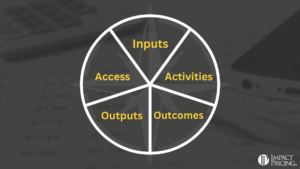I’ve heard some version of the following from many CEOs:
“We create a lot of value for our customers but we don’t do a very good job of capturing our fair share in our pricing.”
This one quote defines a value capture gap (VCG). It’s the difference between the actual value captured (AVC) through the realized price (money deposited in the bank) and what the firm thinks should be their fair share, their value capture expectation (VCE).
(Sorry for the acronyms. I list them all at the end of this article for easy reference.)
The Value Capture Gap Formula
Think of it this way:
VCG = VCE – AVC
Let’s expand on these terms.
Value Capture Gap
The VCG represents lost profits. Using the reasonable assumption that costs don’t change as you capture more value, then any additional revenue drops straight to the bottom line as profit. This is value your company is delivering to the market that you should be getting paid for, but aren’t.
The concept of VCG (value capture gap) resonates with executives. When they hear it, their next question is do you have any actionable steps to reduce it?
Actual Value Captured
The AVC (actual value captured) is the price minus all discounts. When a customer’s check hits the bank, that’s the AVC. It is what’s left after discounts salespeople offered, early payment discounts, discounts for cash, etc. This sounds pretty well defined, but it could get a little fuzzy as you decide whether to add in or ignore costs to serve a customer.
For example, if only one customer gets free shipping, you may reduce the AVC by the amount of shipping. Since this is conceptual for now, don’t worry about specific details.
Value Capture Expectation
Your VCE (value capture expectation) is very fuzzy. What do you think you should capture? I often teach that for Will I products you should expect to price at 10% of your customer’s expected value. If you accept that as true in your case, then 10% is your VCE.
As an example, say your company has a Will I product, no competition. The buyer believes they will save $1M in operating expenses if they implement your product. You should expect to be able to win at $100,000 so your VCE is $100K. You may even set your list price at $100K, but it’s not necessary. For some reason, the buyer negotiated a discount to $70K. That’s the AVC. Your Value Capture Gap is $30K. Somehow, as a company, you were unable to capture $30K that you expected to get.
The Role of Narrowing the Value Capture Gap in Your Company
The whole point of this blog is to introduce a way of thinking about how well a company is capturing their fair share of the value they deliver to their customers. One narrow way to think about pricing is to determine how to win more deals at higher prices. Hence, you could say an important role of pricing is to narrow the value capture gap.
VCG seems to resonate with executives because they have a belief of how much value they should be capturing, and they rarely capture that entire amount. If you think about it, almost all of the company is focused on creating and delivering value. Only pricing and salespeople are focused on capturing that value from the market.
Try out the term in your company. Let me know how it goes.
Again, the terms for your reference:
VCG – Value Capture Gap
VCE – Value Capture Expectation
AVC – Actual Value Captured
What does it mean to run a Value Based Business? To learn more about driving your company to faster, more profitable growth by creating a Value-Driven Culture in your organization, check out our Value Based Business Course in our Champions of Value online pricing University. We currently feature the industry’s highest quality pricing education for pricing professionals like you. CLICK HERE TO LEARN MORE















